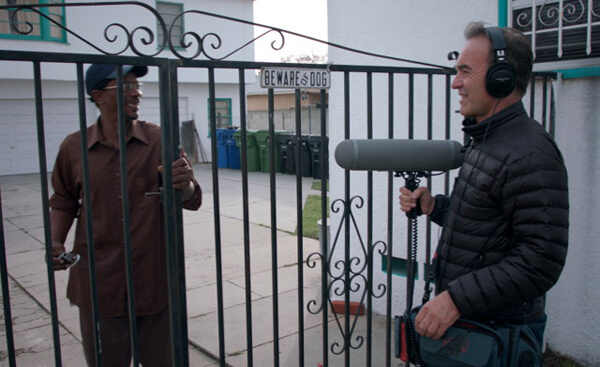#NYFF 2014: Tales of the Grim Sleeper
Nick Broomfield’s Tales of the Grim Sleeper plays this evening and tomorrow afternoon at the 52nd New York Film Festival. The film has been acquired for distribution by HBO Documentary Films.
In 2010, South Central resident Lonnie Franklin, Jr. was arrested on ten counts of murder, one of suspected murder; his house yielded a cache of hundreds of nameless photos of black women, blood-stained clothing, hours and of hours of video footage. His nickname in the press—“The Grim Sleeper”—came from the ostensible gap between killings in 1988 and 2002, but the jackpot of evidence began to suggest a longer spree, of not just murders but also kidnappings and rapes. In their first encounters with Nick Broomfield, director of Tales Of The Grim Sleeper, a preponderance of male interviewees avow—from one end of South Central to the other—that, despite the allegations against him, Franklin was actually a pretty solid dude. Grim Sleeper is less interested in the accumulation of hard evidence, and more the dawning realization among the community (not just limited to Franklin’s guy-friends) that, yes, he really was able to get away with these things. And it was easy. Referring to crackheads who came under Franklin’s thumb, a friend of his jokes: “They don’t know that they’re messing with the wrong man. You get into that car, you ain’t coming back out!” He and his companion then both burst into knowing guffaws of laughter.
The stickiest subject isn’t the two-decades-long negligence of the LAPD—although it’s there—but rather, a type of complicity that allowed Franklin to operate as a mini-dictator. One of his few available survivors, a reformed sex worker (and crack-smoker) named Pam, becomes Broomfield’s de facto guide, and her own detective work takes the film places it’s hard to imagine Broomfield strolling into on his own. The director’s signature third-wall-busting isn’t as obtrusive as in his earlier work, and allows for a welcome varietal of something resembling humor amid so many excruciating testimonies. Broomfield explores how, on the face of it, it’s enough for the powers that be to have Franklin in custody; the odds of his victims getting their own investigations, to say nothing of his connection to the scores of women flat-out missing, are depressingly low. (Franklin aside, a whole other documentary could be made about the means of closure attempted by the victim’s families and community organizations.) A representative of one group casually offers what will become the film’s thesis: “The real tragedy is the lack of concern that allowed so many more people to be murdered.” It’s the same reason why, in the event of an emergency, she strictly forbids her kids from dialing 911: to the authorities, a black life is either a threat, or nothing at all.
You might also like 





















